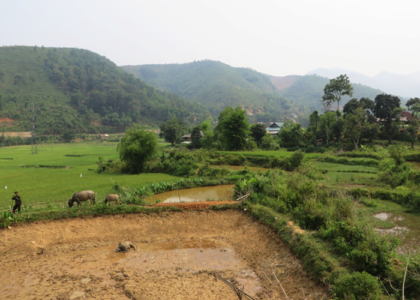
The impacts of COVID-19 have been various and multi-fold, reaching into every sector of our lives: social, economic and political. COVID-19 has also been more severe on vulnerable social groups. One such population is labor migrants, rural to urban and transnational. Travel restrictions have severed livelihoods for millions of migrants, both women and men, and because they work outside formal channels, they are often not eligible for government assistance, making their already precarious lives and livelihoods much more difficult.
While the media has highlighted issues about stranded migrants, we know almost nothing about the lived experience of migrants during the pandemic and their households which rely on remittances for survival. This condition invites many questions, such as: How do migrants and remittance-receiving households respond to these challenges? What are the roles of small-scale farming in the pandemic? How do existing inequalities based on gender, ethnicity, and class affect the coping strategies of migrants?
Some answers to these questions are now at hand. A recent qualitative study funded by the CGIAR Research Program on Policies, Institutions and Markets (PIM) explored the impact of the COVID-19 pandemic on transnational and rural-urban migration and the role of small-scale farming in remittance-receiving households in Vietnam. Drawing on in-depth interviews with migrant workers and their families, researchers focused on one province (Son La) where ethnic minority women and men work in urban construction sites, and a second province (Ha Tinh) where young men migrate transnationally for work in places such as Japan, Taiwan and South Korea.
In Son La, researchers found the pandemic had intensified the precarity of already difficult lives, especially for women and children. Meanwhile, in Ha Tinh, families were surviving on small-scale farming and livestock production to make up for the loss of remittance from abroad. Thus, these families were forced to postpone repaying debts used to finance migration, education, and/or building a house.
In both study sites, the pandemic did not change perceptions about livelihood strategies. Labor migration remains the only available option for Son La farmers (especially smallholders and widows) to provide for their families and the best option for young men in Ha Tinh to gain financial autonomy while providing support to family back home.
Reflections shared by the respondents indicated that the conditions for migrants from both locations are deeply affected by structural injustices baked into the labor market which offer little social provisioning and support in times of crisis. For agriculture to provide a sustainable alternative to these exploitative conditions, diverse options must be available to accommodate the different needs of marginalized households that depend on off-farm incomes and small-scale farming.

For example, highly intensive commercial agriculture is not always a feasible option for ethnic minority poor farmers in mountainous regions (such as Son La) and disaster-prone coastal areas (like Ha Tinh). “Rather, they focus on low-investment, short-cycle multi-use crops and livestock such as sweetpotato, local vegetables and poultry. These items are often undervalued in agricultural development policies compared to export-oriented high value crops,” according to Trang Bui, one of the study’s authors.
In addition to the economic stressors of the pandemic on vulnerable groups, the authors also spoke to many women who reported increased family tension, abuse and increased alcohol consumption resulting from anxiety. These women also fretted openly about being able to meet their children’s needs for education and medical attention. Nozomi Kawarazuka, a social anthropologist for CIP, observes, “We find the economic stressors and related social and family tensions reinforce a vicious-circle of poverty in the long term.”
The research team insists upon the need for more investigation to ensure that vulnerable groups, and the dynamics they have encountered during the pandemic, are properly understood so that appropriate remedies can be made in terms of policy and social assistance. “The focus must go beyond agricultural production to explore the underlying reasons why small-scale agriculture so often fails to support marginalized groups,” says Kawarazuka.
Acknowledgement
This work was undertaken as part of the CGIAR Research Program on Policies, Institutions, and Markets (PIM) led by the International Food Policy Research Institute (IFPRI) with additional financial support by the CGIAR GENDER platform and the CGIAR Research Program on Roots, Tubers and Bananas. The opinions expressed here belong to the authors, and do not necessarily reflect those of PIM, IFPRI, or CGIAR.
